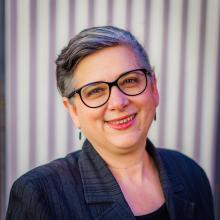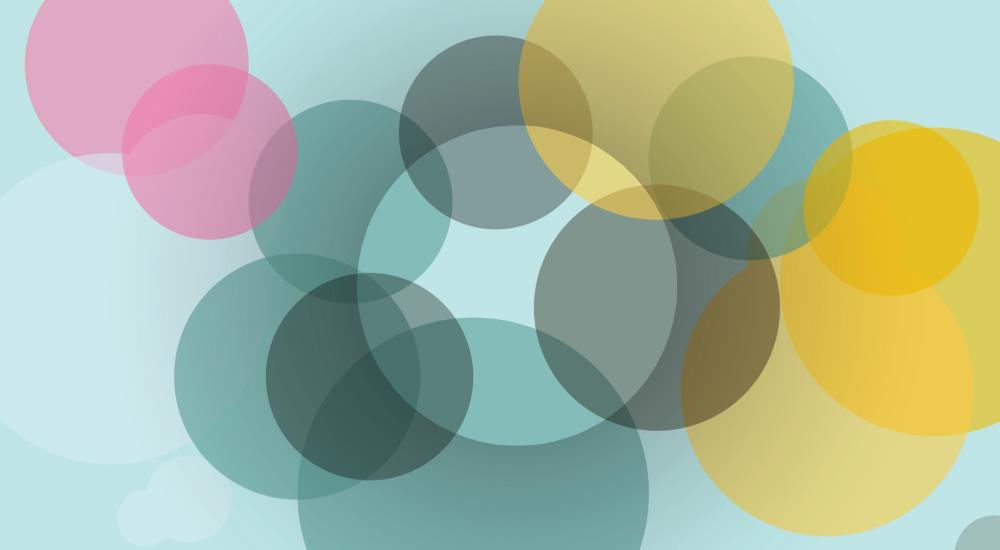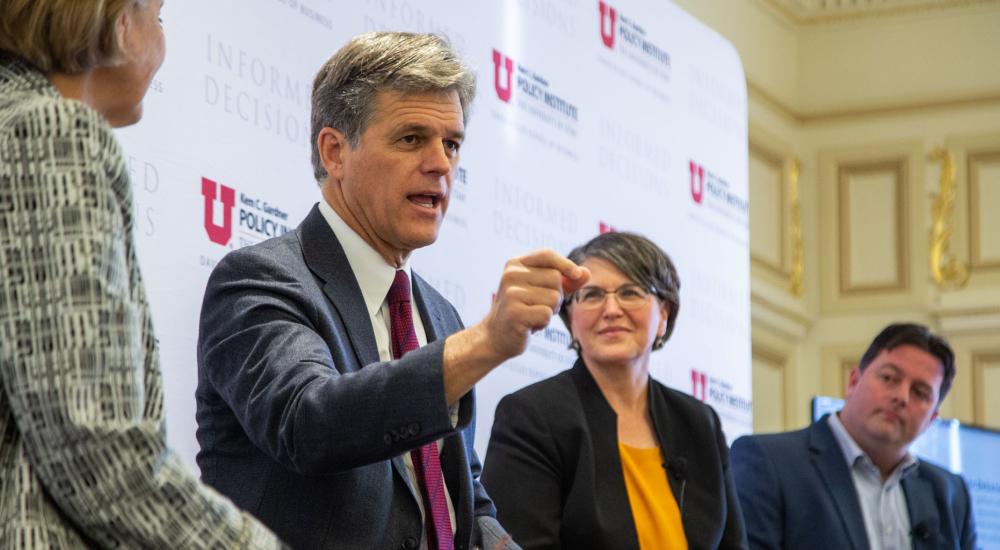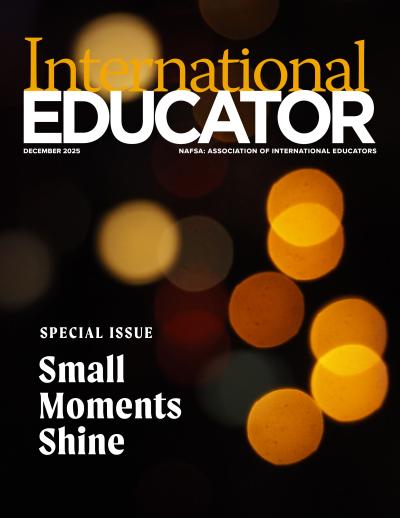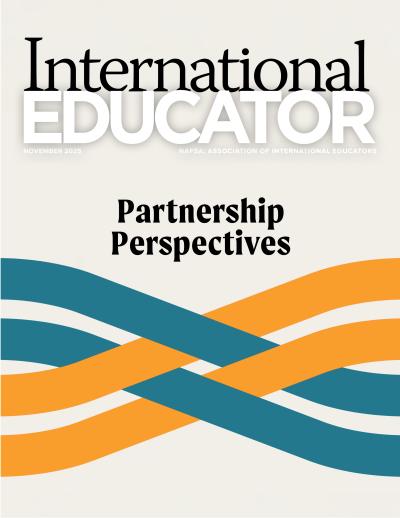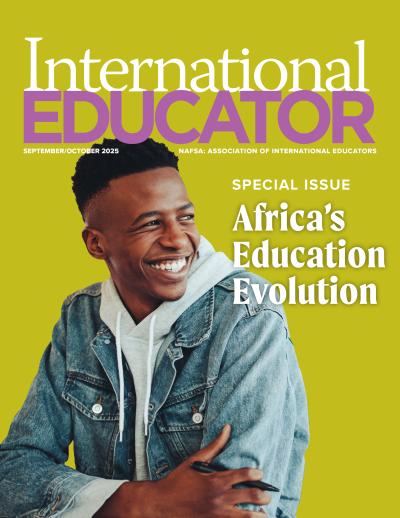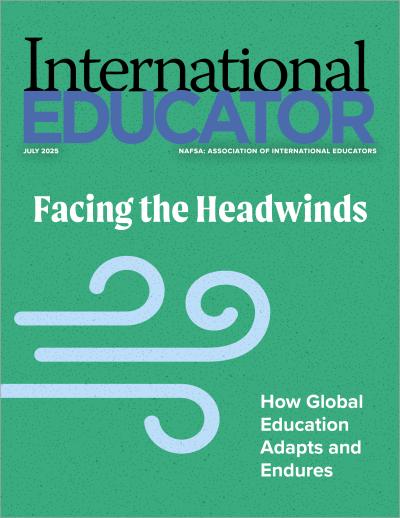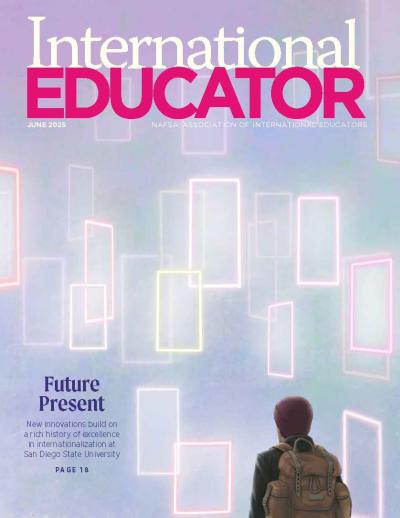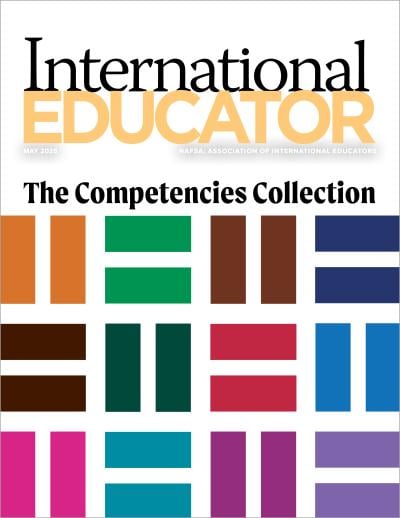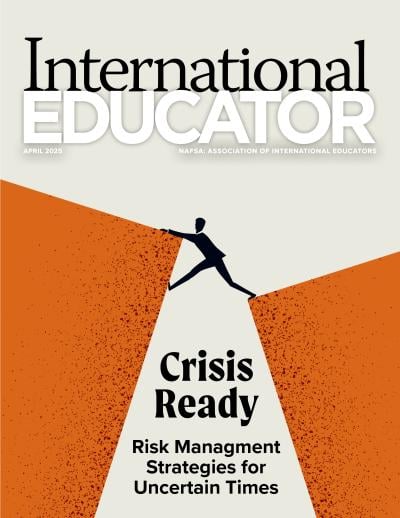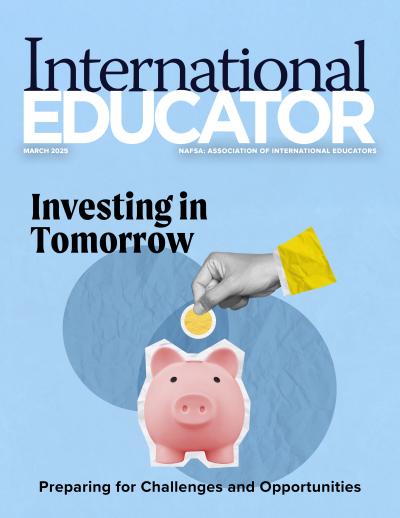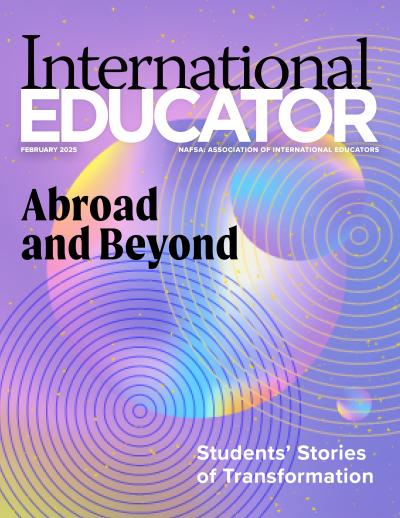Cultivating Connection Across Cultures

In our increasingly interconnected world, the ability to build meaningful connections across cultural boundaries is essential to creating inclusive communities and addressing shared global challenges. Higher education institutions are recognizing that intercultural competence, which encompasses intercultural understanding, empathy, and cross-cultural communication skills, is fundamental to fostering human connections that strengthen both campus communities and our broader global society.
Few scholars have contributed to understanding how to develop these capabilities more significantly than Darla K. Deardorff, EdD. Currently serving as the United Nations Educational, Scientific and Cultural Organization (UNESCO) Chair on Intercultural Competence at Stellenbosch University and as a research scholar at Duke University, Deardorff has dedicated over three decades to advancing international education and intercultural understanding. Her groundbreaking research established the first documented scholarly consensus on intercultural competence definition and assessment, and her models are now used globally by organizations from the United Nations to European foundations to multinational corporations.
As the former executive director of the Association of International Education Administrators (AIEA) for 19 years, Deardorff brings theoretical expertise and practical experience to international education discourse. Her work explores how intercultural competence intersects with peacebuilding and social cohesion, reflecting the power of human connection in addressing complex global challenges.
In this conversation, Deardorff shares insights on how intercultural competence creates stronger campus communities, builds bridges across cultural differences, and prepares students to forge meaningful connections in our interconnected world.
Throughout your career, you’ve extensively researched intercultural competence. How would you describe the relationship between developing intercultural skills and fostering authentic community connections across different cultural contexts?
There’s an essential and deeply reciprocal relationship between developing intercultural skills and fostering authentic community connections. At the heart of this relationship are the human needs to belong, to be seen, and to be heard—needs that transcend differences that may seem to separate us.
Intercultural competence is the ability to communicate and behave effectively and appropriately across difference, whether within a society or across borders. But it’s more than just skills. It’s fundamentally about cultivating cultural humility, openness, empathy, and respect that allows us to connect meaningfully across perceived differences.
When individuals develop key intercultural competencies like listening for understanding, cultural self-awareness, and perspective-taking, they approach others not from judgment or superiority, but with genuine curiosity and willingness to learn. This opens the door to trust-building, which is foundational to authentic community. When we truly honor others’ lived experiences and are willing to be changed by what we learn from them, authentic connections can emerge.
In your open access Manual for Developing Intercultural Competences, you address migration and integration. What specific intercultural approaches have you found most effective in helping communities embrace newcomers while maintaining their cultural identities?
That very question is explored in another open access book I’ve just completed through UNESCO titled More than Welcome. It introduces a new intercultural integration framework built on five principles involving multidirectional adaptation where the fullness of all identities is celebrated.
One approach that’s been incredibly impactful is the UNESCO Story Circles methodology, which is a structured yet adaptable approach for developing and practicing key intercultural competencies such as listening for understanding. This intercultural methodology helps communities connect across divides to create deeper understanding of our shared humanity.
Your UNESCO Story Circles methodology has been implemented across all five UNESCO regions worldwide. Could you share how this approach specifically builds intercultural connections in ways traditional methods might not?
UNESCO Story Circles build intercultural connections differently because participants connect through the heart, not just the head, thus going beyond knowledge. We’ve found that 90 minutes of UNESCO Story Circles far exceed the outcomes from a half to full day of intercultural training. Participants leave with a deeper understanding of our shared humanity, realizing there’s more that connects us than divides us.
Recently, I collaborated with a fellow UNESCO chair in Northern Ireland, facilitating Story Circles where Protestant and Catholic participants sat together and interacted deeply for the first time. There was such hope from participants following their experience; they formed deeper relationships and felt a great desire to share this across Northern Ireland. We’ve also facilitated circles in Sarajevo and various South African communities, including the Cape Flats outside of Cape Town. Witnessing these moments of deep human connection across seemingly great divides gives hope when it seems like humanity is being torn apart.
Given your extensive research on intercultural competence and internationalization in higher education, what role do you see universities playing as community connectors across cultural divides?
Universities hold a unique and powerful position as community connectors, and this role is becoming increasingly critical in today’s interconnected yet polarized world. Universities aren’t just centers of knowledge production, they’re vital spaces for fostering global understanding and social cohesion, not just among students but with all those who are connected to the university and beyond.
Institutions must cultivate environments where intercultural learning is intentionally embedded, not only in international programming but across the curriculum, cocurricular engagement, faculty development, and institutional policies. Universities need to ask: "Who and what are being privileged through our policies and knowledge delivery? Whose voices are missing?"
“Universities aren’t just centers of knowledge production, they’re vital spaces for fostering global understanding and social cohesion.”
It’s often not until the postsecondary level that students first engage with those unlike them. For example, in South Africa, it’s usually not until students attend university that they encounter the richness of the country’s peoples and languages. The same is true in the Balkans, Northern Ireland, and many other places. Universities can model the very intercultural bridge-building that our societies urgently need by connecting with local communities, welcoming refugees and newcomers, engaging in service-learning and community-based research, and addressing societal challenges through culturally responsive collaboration.
Looking ahead, what do you see as the most promising developments in intercultural education research and practice?
I’m excited about several developments. First, my work through the UNESCO Chair on Intercultural Competence aims to identify and elevate African voices, perspectives, and practices around intercultural competence. A substantial amount of intercultural competence work has come from the Global North, including my own—North America and Europe—and there’s much we can learn from those in other places. We host a monthly webinar series and organize an annual intercultural conference on the African continent; this year [it is held] in Rabat, Morocco, and all are invited.
“What does it mean to live an intercultural lifestyle every day? ... How can we see ourselves in others, especially those who don’t think as we do?”
Another promising development is the global nonprofit World Council on Intercultural and Global Competence. This nonprofit brings together practitioners, researchers, students, and policymakers through over 20 online working groups, including languages other than English. Membership is free, and the majority of members come from outside North America, creating a truly global community.
Increasingly, we’re seeing efforts that go beyond defining intercultural competence—after 60 years of scholarly work on definitions—go toward focusing on actions. What does it mean to live an intercultural lifestyle every day? Promising developments now focus on relationality and community rather than exclusively on the individual. How do we live in authentic community with each other? How can we see ourselves in others, especially those who don’t think as we do? These are the questions that need exploring.
In increasingly diverse societies, what specific intercultural competencies do you find most essential for building meaningful connections within communities?
The most essential intercultural competency is listening for understanding. As humans, we naturally listen for response or judgment, which means we’re busy thinking "How will I respond?" or "What’s my opinion?" In the end, we’re more focused on ourselves than on the person speaking.
How do we demonstrate that we value each other as fellow humans sharing this planet? Listening for understanding is one way to do that.
Listening for understanding means having 100 percent of our focus on the person speaking and blocking out distractions including the chatter in our heads. This is different from active listening with paraphrasing, rather, it’s giving ourselves fully to listening deeply. It’s amazing what happens when we engage others in this way. UNESCO Story Circles is one way of intentionally practicing this key competency.
We need to stay curious about one another, to want to learn more, to go outside our comfort zones every day, and to demonstrate respect for each other, especially toward those who don’t think or believe as we do. How do we demonstrate that we value each other as fellow humans sharing this planet? Listening for understanding is one way to do that.
How do you see the intercultural competence framework evolving to address current global challenges, particularly as technology continues to reshape how we interact?
There are numerous frameworks on intercultural competence, though many originate from the Global North and emphasize the individual perspective. The framework from my research was among the first empirically grounded frameworks and has found global resonance across diverse cultural settings. A recent Chinese replication study engaging experts primarily from Asia remarkably mirrored the original findings, validating the framework’s relevance years later.
Globally, understandings of intercultural competence have evolved beyond a narrow focus on "cultural difference" to encompass the broader reality of "connecting across difference." This includes not only engagement between distinct cultural groups but also navigating differences within communities: gender, generation, religion, socioeconomic background, language, identity, and more.
In our increasingly digital world, technology is reshaping both our conception of what it means to be human and how we build deeper, more authentic relationships with each other, which only humans can do. The questions we need to explore include: What does being human mean in an artificial intelligence age? How can we see ourselves in others, especially those who think differently? How might we view the world through the lens of interconnectedness of all living beings sharing this planet? What does human and planetary flourishing look like? In the end, we need to focus more on our commonalities by embracing our shared humanity. •
About International Educator
International Educator is NAFSA’s flagship publication and has been published continually since 1990. As a record of the association and the field of international education, IE includes articles on a variety of topics, trends, and issues facing NAFSA members and their work.
From in-depth features to interviews with thought leaders and columns tailored to NAFSA’s knowledge communities, IE provides must-read context and analysis to those working around the globe to advance international education and exchange.
About NAFSA
NAFSA: Association of International Educators is the world's largest nonprofit association dedicated to international education and exchange. NAFSA serves the needs of more than 10,000 members and international educators worldwide at more than 3,500 institutions, in over 150 countries.
NAFSA membership provides you with unmatched access to best-in-class programs, critical updates, and resources to professionalize your practice. Members gain unrivaled opportunities to partner with experienced international education leaders.


